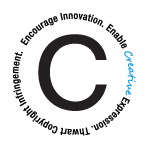 There’s one thing to this whole video identification business I don’t understand. If it’s so important that we stop people from uploading copyrighted content to video sharing sites like YouTube and Veoh, then why haven’t the best brains in multiple industries figured out a solution?
There’s one thing to this whole video identification business I don’t understand. If it’s so important that we stop people from uploading copyrighted content to video sharing sites like YouTube and Veoh, then why haven’t the best brains in multiple industries figured out a solution?
Is video fingerprinting not possible? Is it too complicated? Is it barking up the wrong tree? Trying to stop people before they upload copyrighted video seems nearly impossible to me — and many of us think it’s a complete waste of time and resources.
But we’re not Big Media.
Big Media is hellbent to stop people from uploading copyrighted video to the Web. So instead of getting together and working on a viable solution, what do Big Media and their Internet buddies do? They announce the formation of a copyright protection blood pact that promises to “foster online innovation while protecting copyrights.”
 Big Media companies Disney, CBS, Fox, NBC Universal, and Viacom are joining Internet companies Microsoft, Dailymotion, MySpace, and Veoh in this pact. Together they promise to abide by User Generated Content Principals — which are not legally binding — in a sign of solidarity and trust-building among the companies.
Big Media companies Disney, CBS, Fox, NBC Universal, and Viacom are joining Internet companies Microsoft, Dailymotion, MySpace, and Veoh in this pact. Together they promise to abide by User Generated Content Principals — which are not legally binding — in a sign of solidarity and trust-building among the companies.
While the brothers-in-arms acknowledge that the video fingerprinting technology existing today doesn’t work well, they offer nothing stronger than saying they will abide by the pact’s principles and require that they all make their best effort to stem pirated content on their sites.
“We are delighted that so many leading companies have come together behind a set of principals that provide a framework for intellectual property to live in harmony with technical advances,” Viacom President and Chief Executive Officer Philippe Dauman said, reading from a prepared statement.
“These principles will enable innovative technology and great content to come together to spur greater innovation and, most importantly, much richer entertainment experiences for consumers.”
 While he gave his “three cheers!” speech for the Copyright Protection Pact, Dauman issued a “thumbs down” vote for Google and its YouTube Video Identification System, announced by Google earlier this week.
While he gave his “three cheers!” speech for the Copyright Protection Pact, Dauman issued a “thumbs down” vote for Google and its YouTube Video Identification System, announced by Google earlier this week.
Google, you may recall, is being sued by Viacom for more than $1 billion for content being used on its YouTube property without permission. Obviously, Google was not included in The Pact, although the Wall Street Journal notes it has been in discussions about the possibility of joining the group.
In a first effort to address copyright concerns, Google developed the YouTube Video Identification System, which puts the burden on the rights holders — namely Big Media — to upload versions of their copyrighted movies, TV shows, and other video content to a database. The content is broken down into data points and analyzed so that any pirated versions posted will be automatically identified and taken off YouTube within minutes. It’s far from perfect, but it’s a start.
“I don’t think we’re quite there,” Dauman said at Web 2.0. He said Google can do things quickly if it wants to, implying that Google has the resources to solve the problem, “but I guess they haven’t wanted to at this point.”
Which brings me back to my original question: If it’s so important that we stop people from uploading copyrighted content to video sharing sites, then why haven’t the best brains in multiple industries gotten together to figure out a solution instead of signing a non-binding Pact?
